Last Updated on August 14, 2023 by a Friendly Gardener
If you’re passionate about orchids, you know that these plants are particularly sensitive when it comes to finding the right environment and maintaining it. So, aside from blooming issues, discovering split orchid leaves can be a bit disheartening. What went wrong? Am I missing something?
Why Are My Orchid Leaves Splitting?
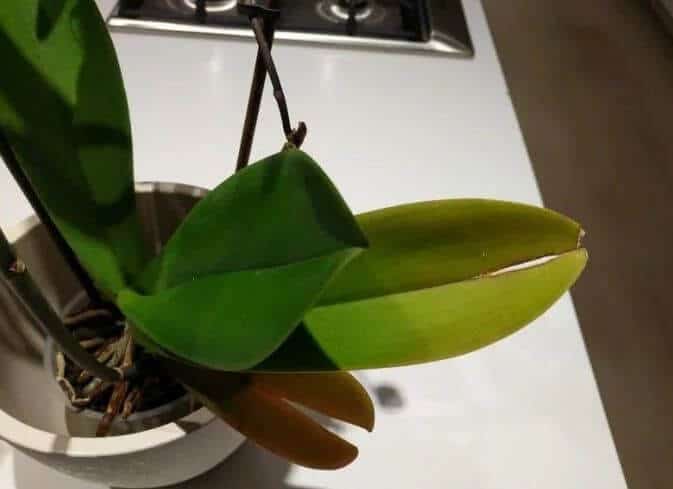
Orchid leaves can split for a variety of reasons including doing so for no apparent reason despite excellent care. Environmental and care causes may include excessive direct sunlight exposure, an irregular water schedule, plant trauma, or low humidity levels. While orchid leaf split may not be related to a serious issue, it is important to investigate the cause to make any needed adjustments to your care routine or the environmental conditions.
Causes of Orchid Leaves Splitting
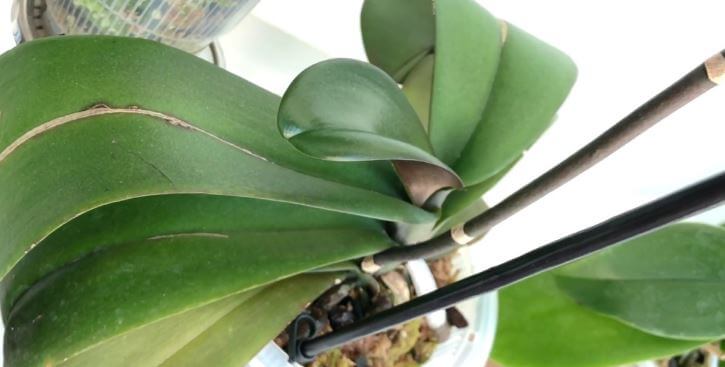
Improper care or environment are the principal causes of orchid leaves splitting. One thing that may help you identify the cause is the direction of the leaf split. Is it vertical or horizontal? This may be your first clue as to what the problem is.
A vertical leaf split is more common than a horizontal one and this type of split may not be the result of a care issue. Horizontal orchid leaf split is generally caused by trauma to the plant such as your plant being knocked over or treated roughly, although occasionally it may be caused by excessive sunlight exposure.
Excessive Sunlight Exposure
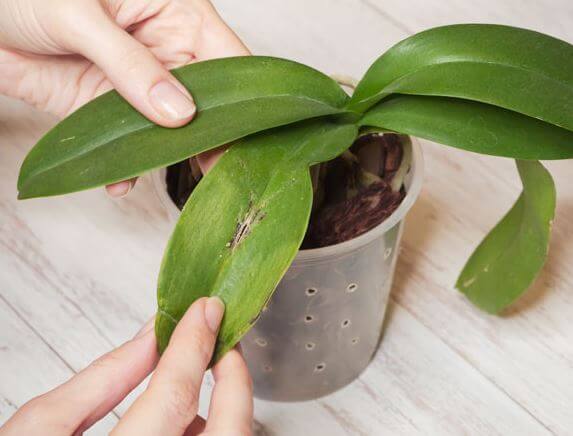
Orchids are epiphytes that thrive in indirect sunlight. When exposed to direct sunlight, especially for an extended period, this can stress and damage the plant. The foliage of the plant can, just like humans, be subject to sunburn. This will cause the leaf to dry out with cracking and splitting following. Prolonged direct sunlight can burn leaf tips, scorch leaves, and cause cracks to form through the center of the leaf.
What to do
Move your orchid to a spot where it can bathe in bright, but rigorously indirect sunlight.
Irregular Watering
An irregular watering schedule can cause leaf splitting. This is particularly true for certain orchid species like the phalaenopsis orchid. This kind of orchid, which is quite common has foliage that is firm when touched meaning that the leaf structure benefits from considerable turgor pressure to keep its shape. If you forget to water your plant, this kind of foliage will begin to wrinkle and droop.
When you do remember to water, leaves will swell in an attempt to return to their ideal shape. Swelling, wrinkling, and swelling again can place pressure on the leaf structure causing the weakest part of the leaf, or the central vein, to split the leaf down the middle.
What to do
Orchids require a balance between water and root aeration. When watering, it’s best to simulate the plant’s natural environment. As epiphytes, they grow with air roots that attach to tree trunks but are watered frequently by Mother Nature. Orchids need a growing medium specifically designed for them, so a potting mixture with orchid bark is ideal. The growing medium must drain exceptionally well and remain mostly dry. Depending on the medium you select, you may need to water more often or not. Sphagnum moss requires less watering whereas a fast-draining bark mixture may require more frequent watering.
Low Environmental Humidity
Again, some orchid species, like the Moth orchid are sensitive to a lack of environmental humidity and leaves will split as a result of there being too little humidity in the area where the plant is located. If orchids are unable to get sufficient moisture, leaves will dry and split.
What to do
Consider cultivating your orchid in a room with more humidity such as a bathroom or kitchen. If this is not ideal, introduce a space humidifier or place a pebble tray beneath your plant’s container to increase the humidity in the immediate area.
Plant Trauma
Plant trauma can be caused by an accident. Inadvertently dropping your orchid plant or knocking it off its perch can result in trauma. Leaves can break off or split in the fall. Depending on how severe the fall is, the plant may sustain damage that is not fatal.
Orchids should not be within the reach of small children or curious family pets. These are delicate flowering plants. Grabbing leaves, claws, and paws can all cause orchid leaf split. Being too rough with these plants places them at risk for leaves splitting, breaking, and other damage.
What to do
Accidents do happen. But in the case of small children or family pets, you should place your orchid out of reach to protect it.
Other Considerations
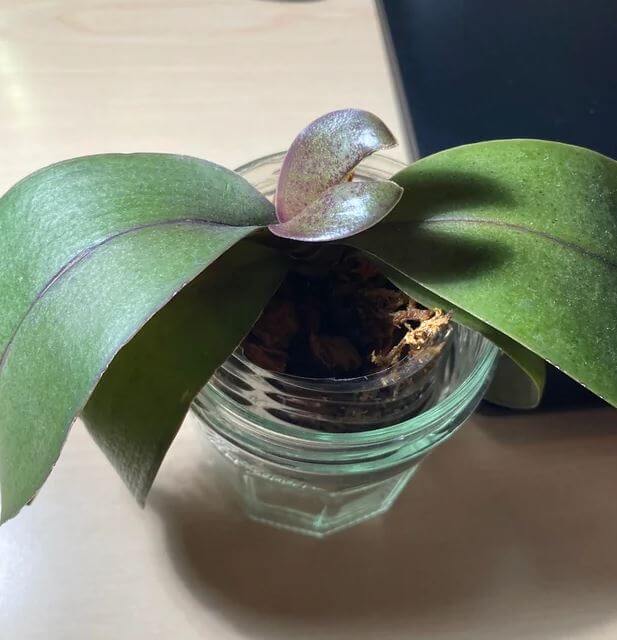
Other types of plant damage that may contribute to splitting orchid leaves might include:
-
Sunburn
Check the leaf color. Yellowing leaves or white and dark brown spots may all indicate excessive light exposure. Yellowing leaves are unnatural for orchids.
-
Black Rot
When leaf edges begin to yellow, you may have a case of black rot. If you intervene immediately, you may have a chance at saving your plant before the roots are affected. Slice off any affected leaves and infected growths. Treat the orchid plant with a fungicide. If you prefer not to use chemicals, apply cinnamon to it.
-
Fungal Leaf Spot
Check the undersides of foliage for yellow spots with brown edges. This is a symptom of a leaf spot fungal infection. Remove affected leaves by pruning them and isolate your orchid from other houseplants. If you suspect a fungal infection, avoid misting your plant. To kill the fungus, spray your plant lightly with organic neem oil or a fungicide.
-
Bacterial Brown Spot
Wet lesions on leaves are generally a sign of bacterial brown spots. This is a disease that will continue to spread through your plant. Unfortunately, it is incurable. The only hope for saving the plant is to remove the affected leaves completely. After pruning, try a bacterial gardening treatment to attempt to protect apparently healthy plant parts. Neem oil is an organic solution.
Are Split Orchid Leaves Fixable?
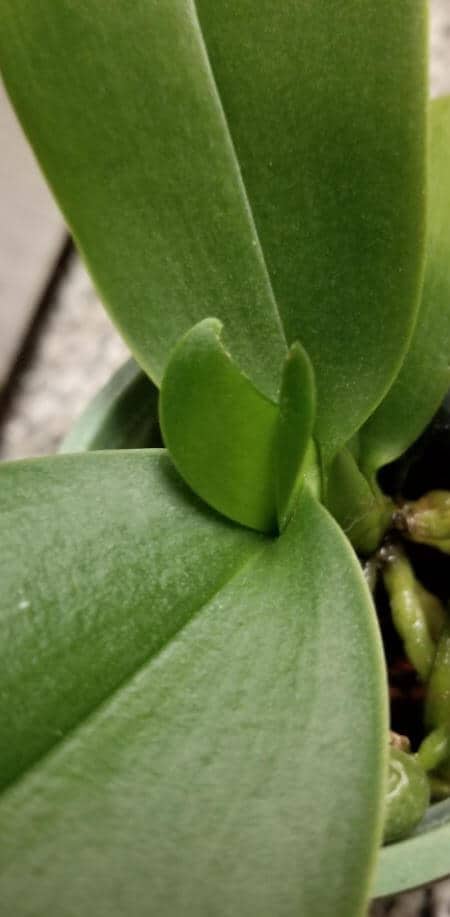
Split leaves cannot be repaired. They can be trimmed off and you can try to prevent other leaves from splitting by
- Keeping your orchid out of reach for pets and kids
- Maintaining a watering schedule without overwatering
- Providing bright indirect light and environmental humidity
- Feeding your orchid plant with an appropriate fertilizer.
Orchids are lovely creatures. In many cases, an orchid leaf split is nothing more than an eyesore but will not significantly harm your plant.

